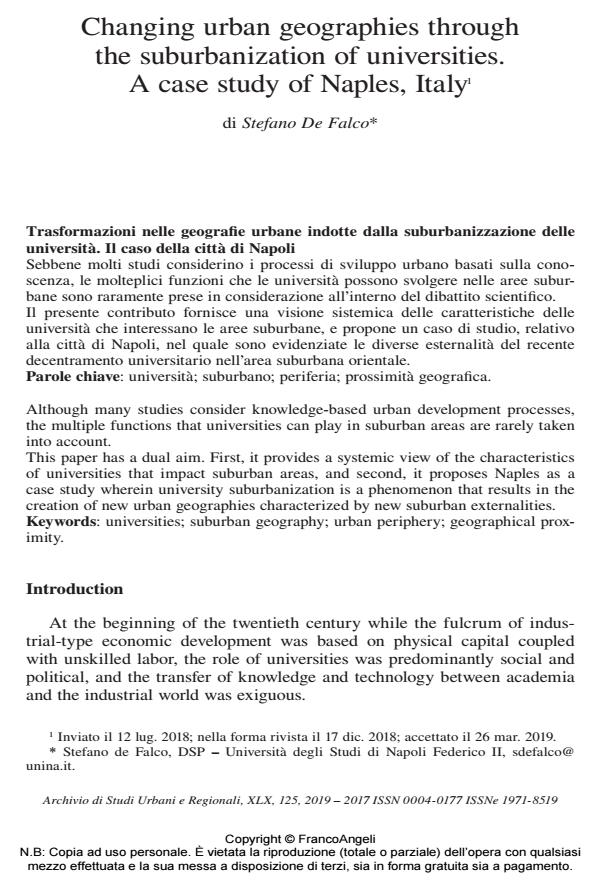Changing urban geographies through the suburbanization of universities. A case study of Naples, Italy
Journal title ARCHIVIO DI STUDI URBANI E REGIONALI
Author/s Stefano De Falco
Publishing Year 2019 Issue 2019/125
Language Italian Pages 27 P. 141-167 File size 259 KB
DOI 10.3280/ASUR2019-125007
DOI is like a bar code for intellectual property: to have more infomation
click here
Below, you can see the article first page
If you want to buy this article in PDF format, you can do it, following the instructions to buy download credits

FrancoAngeli is member of Publishers International Linking Association, Inc (PILA), a not-for-profit association which run the CrossRef service enabling links to and from online scholarly content.
Although many studies consider knowledge-based urban development processes, the multiple functions that universities can play in suburban areas are rarely taken into account. This paper has a dual aim. First, it provides a systemic view of the characteristics of universities that impact suburban areas, and second, it proposes Naples as a case study wherein university suburbanization is a phenomenon that results in the creation of new urban geographies characterized by new suburban externalities.
Sebbene molti studi considerino i processi di sviluppo urbano basati sulla conoscenza, le molteplici funzioni che le università possono svolgere nelle aree suburbane sono raramente prese in considerazione all’interno del dibattito scientifico. Il presente contributo fornisce una visione sistemica delle caratteristiche delle università che interessano le aree suburbane, e propone un caso di studio, relativo alla città di Napoli, nel quale sono evidenziate le diverse esternalità del recente decentramento universitario nell’area suburbana orientale.
Keywords: Universities; suburban geography; urban periphery; geographical proximity.
Stefano De Falco, Changing urban geographies through the suburbanization of universities. A case study of Naples, Italy in "ARCHIVIO DI STUDI URBANI E REGIONALI" 125/2019, pp 141-167, DOI: 10.3280/ASUR2019-125007